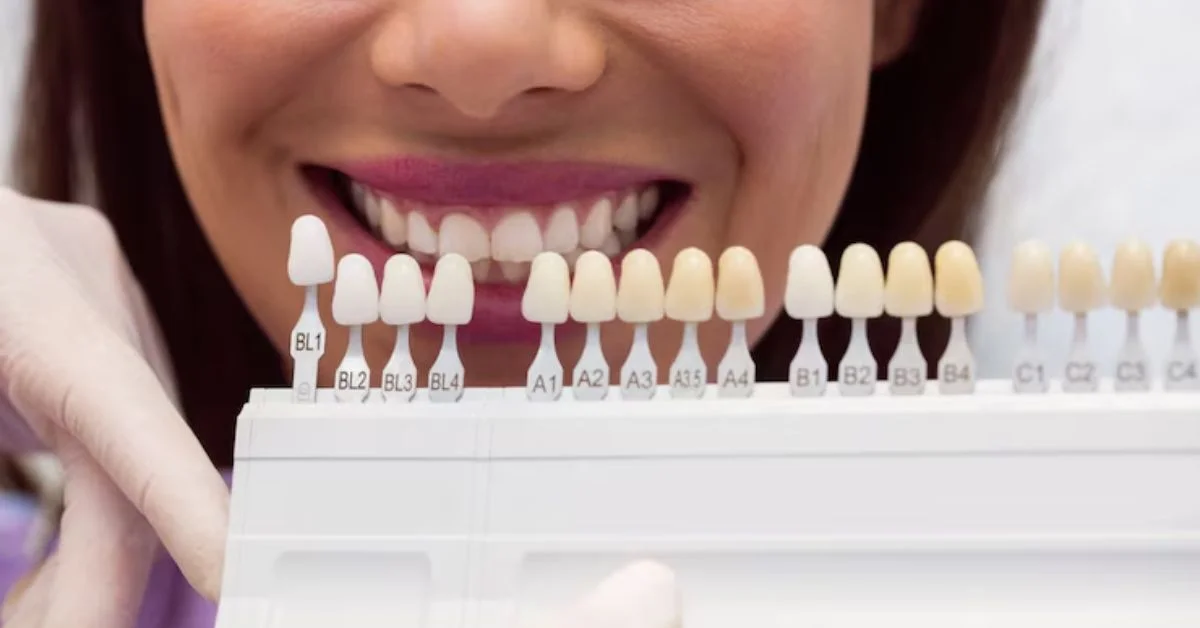For many people, a smile is more than just a facial expression—it’s a symbol of confidence, health, and identity. In the modern age, where appearance often intersects with professional and social success, cosmetic dentistry has become a rapidly growing field. At the forefront of this transformation are veneers, a dental solution that offers a dramatic yet natural improvement to the appearance of teeth.
If you’re exploring options to enhance your smile, correct imperfections, or simply understand more about cosmetic dentistry, this guide provides a comprehensive look into veneers—what they are, how they’re applied, their benefits, risks, and long-term care. Whether you’re contemplating a cosmetic upgrade or simply satisfying your curiosity, here’s everything you need to know about veneers, presented in clear, up-to-date detail.
What Are Veneers?
Veneers are thin shells, typically made from porcelain or composite resin, that are custom-designed to cover the front surface of teeth. They are bonded to the teeth to improve shape, size, color, and overall appearance. It can transform a smile by correcting issues such as:
- Discoloration or staining that doesn’t respond to whitening
- Chips or cracks
- Minor misalignments or gaps
- Worn-down or uneven teeth
Unlike crowns, which cover the entire tooth, these are more conservative—they only coat the visible front, preserving most of the natural tooth structure.
The Evolution of Veneers: A Brief History
The concept of veneers isn’t new. The earliest versions were introduced in the 1920s by Hollywood dentists to temporarily improve actors’ smiles during film shoots. These early iterations lacked permanence and fell off easily.
It wasn’t until advancements in dental adhesives and porcelain technology in the 1980s that veneers became a long-term cosmetic solution. Today, they represent one of the most sought-after cosmetic dental procedures worldwide, combining durability with natural aesthetics.
Types of Veneers
1. Porcelain Veneers
- Material: High-quality dental-grade ceramic
- Durability: 10–15 years
- Aesthetics: Highly natural appearance with stain resistance
- Cost: Higher than composite veneers
- Process: Requires multiple visits; minimal enamel removal
2. Composite Veneers
- Material: Tooth-colored resin
- Durability: 4–8 years
- Aesthetics: Slightly less natural but still effective
- Cost: More affordable
- Process: Often completed in a single appointment
3. No-Prep Veneers (e.g., Lumineers)
- Minimal or no enamel removal
- Ideal for patients with mild cosmetic concerns
- Less durable than traditional porcelain veneers
- Reversible in some cases
Each type has advantages, and the right choice depends on your oral health, goals, and budget.
The Procedure: Step-by-Step
Step 1: Consultation
Your journey begins with a comprehensive evaluation by a cosmetic dentist. This includes:
- X-rays and oral examination
- Digital or physical impressions
- Discussion of your goals and expectations
- Assessment of suitability (e.g., healthy gums, no decay)
Step 2: Tooth Preparation
For traditional porcelain veneers, a small amount of enamel (typically 0.3–0.7 mm) is removed from the front of the tooth to allow space for the veneer and ensure a flush fit.
Step 3: Impression and Temporary Veneers
After preparation, impressions are taken and sent to a dental lab. You’ll often receive temporary veneers to protect your teeth and provide a preview of your new smile.
Step 4: Veneer Fabrication
Custom veneers are crafted to match the shape, shade, and natural translucency of your teeth. This process usually takes 1–2 weeks.
Step 5: Final Placement
During your final appointment:
- The temporary veners are removed
- The permanent veners are tried on for fit and appearance
- The dentist makes any necessary adjustments
- Each veneer is bonded to the tooth using special dental cement and a curing light
The entire process, from consultation to placement, typically spans 2–3 weeks.
Veneers Before and After: What to Expect
Before Veneers
- Teeth may appear discolored, misaligned, chipped, or uneven
- Patients may feel self-conscious about smiling
- Oral health must be addressed (no active gum disease or untreated decay)
After Veners
- A whiter, symmetrical, and more uniform smile
- Improved confidence and self-image
- Minimal discomfort, with most patients adjusting quickly
While not a functional fix for major bite issues or tooth loss, veners can create a significant aesthetic transformation.
Benefits of Veneers
- Natural Appearance: Mimic the light-reflecting properties of natural teeth
- Minimally Invasive: Less removal of tooth structure than crowns
- Stain Resistance: Especially true for porcelain veneer
- Durability: With proper care, they can last a decade or more
- Versatility: Corrects multiple aesthetic concerns in a single treatment
Potential Drawbacks and Risks
- Irreversibility: Once enamel is removed, it cannot be replaced
- Cost: Especially for multiple veneer, can be expensive
- Tooth Sensitivity: Some patients experience sensitivity to hot/cold post-procedure
- Repair Challenges: Veneer are durable but not indestructible; repairs can be complex if they chip or break
- Not for Everyone: People with significant dental issues (e.g., large cavities, gum disease, or teeth grinding) may not be good candidates
A thorough dental evaluation is crucial to determine if veneer are the right option for your smile goals.
Caring for Veneers: Maintenance Tips
Daily Care
- Brush at least twice a day using a non-abrasive toothpaste
- Floss daily to protect the margins around the veneer
Diet and Habits
- Avoid biting hard objects (ice, pens, fingernails)
- Limit stain-causing foods and beverages (coffee, red wine, berries)
- Quit smoking to preserve the whiteness and health of veneers
Dental Visits
- Schedule cleanings and check-ups every 6 months
- Inform your dentist of your veneers so special instruments can be used
Cost of Veneers
Prices vary significantly depending on material, location, and dentist expertise.
| Type of Veneer | Average Cost (USD per tooth) |
| Porcelain | $900 – $2,500 |
| Composite | $250 – $1,500 |
| No-Prep | $800 – $2,000 |
Some practices offer financing options or phased treatment plans. Most dental insurance does not cover veneer, viewing them as cosmetic.
Veneers vs. Other Cosmetic Dental Options
| Treatment | Purpose | Pros | Cons |
| Veneers | Aesthetic correction | Long-lasting, natural look | Permanent, costly |
| Teeth Whitening | Color improvement | Affordable, non-invasive | Limited to color changes |
| Braces/Invisalign | Alignment | Functional and aesthetic | Time-consuming |
| Bonding | Chips and gaps | Quick, less expensive | Less durable than veneer |
| Crowns | Structural damage | Covers entire tooth | Requires more tooth reduction |
Veneers offer a middle ground between aesthetic enhancement and long-term durability for patients with relatively healthy teeth.
Psychological and Social Impact
The emotional transformation that comes with veneer is as profound as the physical one. Patients often report:
- Greater confidence in social and professional settings
- Willingness to smile more often
- Improved self-image and mental health
In a culture where smiles often influence first impressions, the investment in cosmetic dentistry can lead to broader life changes.
Are Veneers Right for You?
You may be a good candidate for veneers if you:
- Have overall healthy teeth and gums
- Want to correct aesthetic issues such as staining, minor alignment, or chips
- Are not prone to grinding or clenching your teeth
- Understand the permanent nature of the procedure
However, if you have extensive decay, weakened enamel, or untreated gum disease, other restorative treatments may be more appropriate.
Conclusion
Veneers are a transformative, time-tested cosmetic solution that can enhance your smile with stunning, natural-looking results. Whether you’re correcting discoloration, closing a small gap, or seeking a total smile makeover, veneers offer a durable and aesthetically refined option. Like any dental decision, success depends on personalized evaluation, skilled application, and diligent care.
As dental materials continue to evolve and public interest in cosmetic dentistry grows, veneers remain a cornerstone of smile enhancement—bridging science, art, and the enduring desire to look and feel one’s best. If you’re ready to invest in your smile, consult a qualified cosmetic dentist to explore whether veneer are the right fit for your unique dental profile and aesthetic goals.
FAQs
1. Are veneer painful to get?
Most patients experience minimal discomfort during and after the procedure. Local anesthesia is used during preparation, and recovery is generally quick.
2. How long do veneers last?
Porcelain venees typically last 10–15 years, while composite veneer last 4–8 years, depending on care and lifestyle habits.
3. Can I get veneer on just one tooth?
Yes. Veneer can be placed on a single tooth or multiple teeth, depending on your needs and goals.
4. Do veneer require special care?
Veneer don’t require special care beyond regular brushing, flossing, and dental visits. Avoid habits that could damage them, like biting hard objects.
5. Are veneer reversible?
Porcelain veneer are not reversible, as enamel is permanently removed. No-prep veneer may be reversible in some cases, depending on how they’re applied.
For more information, click here.









